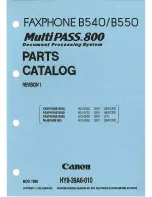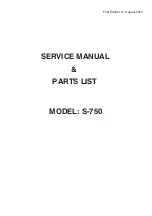
Publication Number 53719. Issue 3, April 2012
Page 18
SERVICE MANUAL FOR THE 13754 TGX150 INTERNAL RLAN TYPE A/B SC ETM
4.1.2 Connecting The Power Cable Assembly
WARNING
INJURY TO PERSONNEL AND/OR DAMAGE TO EQUIPMENT IS
POSSIBLE IF THE VEHICLE POWER SUPPLY IS NOT ISOLATED WHEN
CABLE CONNECTIONS ARE MADE DURING THE FOLLOWING
INSTALLATION PROCEDURES.
Each mounting bracket is supplied with 5 metres of power cable assembly. If required, the
cable assemblies can be supplied terminated with plug/socket connections. This enables
machines to be easily removed from an installation without disturbing the routing of the
majority of the length of cable assemblies. You can therefore have vehicles permanently "wired
up" without having the ticket machine installed. This is ideal for the easy replacement of
unserviceable machines or for having dual-purpose vehicles - public service or private hire. In
the latter case, a self-produced, removable mounting plinth would also be an advantage.
WARNING
THE WAYFARER MOUNTING TRAY AND THE ASSOCIATED MOUNTING
SCREWS, ETC., MUST BE INSULATED FROM THE VEHICLE
METALWORK AND THERE SHOULD BE NO EARTHED METALWORK IN
CLOSE PROXIMITY TO THE TRAY OR ELECTRONIC TICKET MACHINE.
Whenever practicable, the power cables must be connected to the vehicle battery via an in-
line 5amp fuse, the brown wire to the positive terminal and the white wire to the negative
terminal, regardless of the polarity of the vehicle’s earth, i.e. negative or positive earth. If it is
not practicable to connect the power leads directly to the vehicle batteries, they should be
connected to the relevant busbar (vehicle fuse unit) and the +ve line fused with a 5 amp fuse.
An optional on/off switch is recommended to isolate the ETM when required. If the vehicle
has a "positive earth" supply, both the +ve and -ve supply lines to the ticket machine should be
fused.
When running cables during the installation, care must be taken to avoid the sharp edges of
metal bulkheads. Whenever a cable run passes through a hole in a metal fixture (e.g. a
bulkhead), the hole must be fitted with an appropriate sized rubber/plastic grommet. Long
cable runs, or changes in direction of a cable run, must be cleated to a firm, immobile object
to ensure that vibration does not cause the outer covering of the cable assemblies to chaff and
perhaps short out.
The diagram on the following page shows the cable connections required between the ETM
and the other items of equipment.
















































